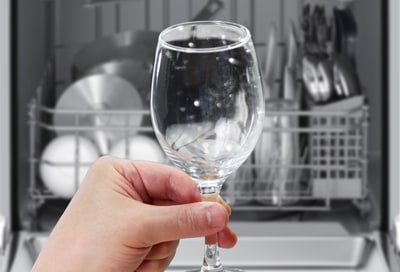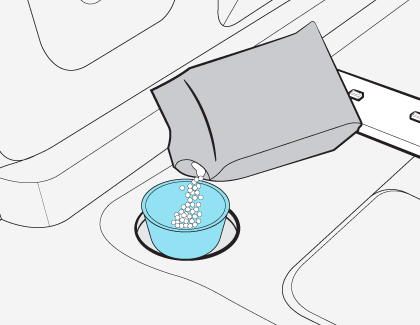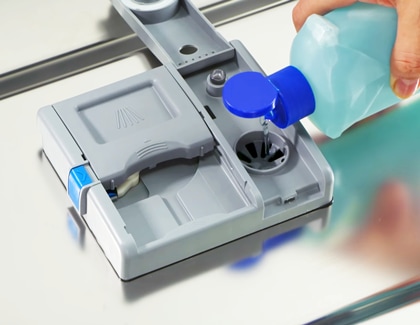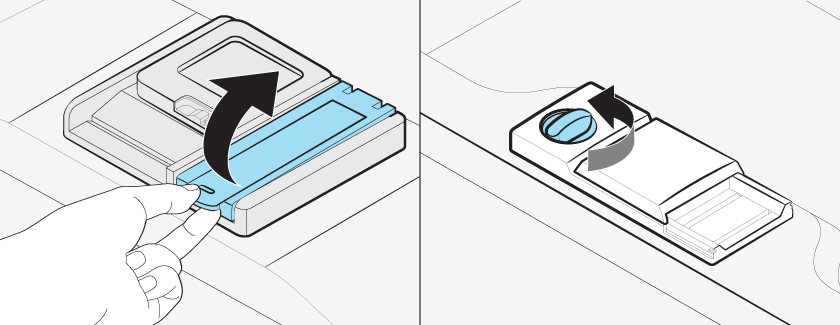White residue appears on dishes after washing in Samsung dishwasher

If white residue is being left on your dishes and other items after washing them in your dishwasher, it may be caused by hard water or excessive detergent. Hard water contains minerals that can leave stains on your dishes. You can use a rinse aid, adjust your dishwasher’s water softener settings, or even reduce the amount of detergent to prevent residue from appearing on your dishes.
Note: Make sure the salt fill indicator and softener settings are correct according to the water hardness of your area. Your local water provider can advise you of the water hardness level in your area.
You will need to manually adjust the water hardness level of your dishwasher depending on your current area’s water, and then fill the salt storage container (covered in the next section of this article). Your dishwasher will optimise the amount of dishwasher-specific salt required based on the hardness level of your water. To ensure the proper settings, contact your local water provider for information on the hardness level of your water supply.
Note: The following instructions may differ depending on your dishwasher model. For steps specific to your model, check your user manual.
• Models DW60B* except DW60BB89* models:
• Models DW60BB89* only:
• Models DW60A80* and DW60R70*:
• Models DW60A60*:
• Models DW60M6043F* and DW5043F*:
• Models DW60M5042F* only:
• Models DW50R40*:
Please see information and instructions below for filling the salt storage container.
Notes:
• If the hardness level of the supplied water is unsteady, set the dishwasher to the highest measurement. For example, if the water hardness reading ranges from 6.7 mmol/l to 9.0 mmol/l, set the dishwasher to 9.0 mmol/l.
• The dishwasher’s default water hardness level is 3 (2.1-3.0 mmol/l). If this setting matches the water hardness level in your area, you do not need to change it.
Note: The following instructions may differ depending on your dishwasher model. Please check your dishwasher’s user manual for specific information.
After setting the water hardness level on your dishwasher, you can then fill the salt storage container. Please use the following steps:

Note: When opening the cap, clean water that has been stored may run out. You can add salt to prevent the water from leaking.
Note: This is only required when using the dishwasher for the first time.

Cautions and notes for using salt storage:
• Use dishwasher-specific salt only. Do not use any other type of salt or solvent, as they may damage the salt storage and the water softening system.
• The maximum salt capacity is about 1 kg. Do not exceed this amount. Doing so may affect the dishwasher’s performance.
• To prevent corrosion caused by an excessive amount of salt or salty water, always fill the salt storage before beginning a cycle.
• Make sure the salt storage cap is correctly fastened and tightened.

Using a rinse aid will improve the drying performance of your dishwasher. You can also try using a smaller amount of detergent and increase the rinse aid. When you’re ready to add a rinse aid, please use the following instructions:

Cautions and notes for using rinse aid:
• It is recommended to use only liquid rinse aid. Powdered rinse aid may clog the reservoir opening and cause the dishwasher to malfunction.
• Do not overfill the rinse aid reservoir, as this may cause the rinse aid to overflow during a cycle.
• Do not apply detergent to the rinse aid reservoir.
Thank you for your feedback!
Please answer all questions.































